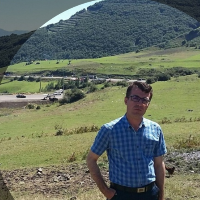Analysing the Quality Karaj City Green Spaces using Remote Sensing Ecological Index (RSEI)
The increase of human activities has caused disturbances in human ecosystems and environment in different scales. Remote sensing techniques have been found to be effective for quantifying and detecting ecological changes and can be considered as an alternative for monitoring spatial changes in the ecological conditions of the environment. Today, the use of remote sensing data for studies related to the quality of the urban environment has also gained a great attention. In this research, the ecological quality of Karaj city's environment was evaluated and analyzed using Landsat series images in 2010 and 2020 by analyzing the main components of greenness, humidity, dryness and heat to determine four remote sensing ecological indicators. Remote sensing ecological indicators used in environmental quality extraction include LST, NDVI, NDBI and WET. The results showed that the quality of the environment of Karaj city has generally decreased from 2010 to 2022 and the average RSEI has decreased from 0.59 to 0.25, which shows the destruction of the environment of this city due to the expansion of its residential parts. Environmental changes in the study area are closely related to human activities in the form of spatial expansion of residential areas and development, which is caused by the immigration of the study area and its proximity to the Tehran. The index used in the present research can adequately reflect the spatial changes of environmental quality from different dimensions and is an effective method for comprehensive evaluation of environmental quality and ecological conditions in urban environments.
-
Analyzing the lateral changes of Aras River channel in Ardabil province using morphological indicators
Fariba Esfandyari Darabad, Sayyad Asghari Saraskanroud, Mehdi Ghandaiasl, *
Journal of Rs and Gis for natural Resources, Winter 2025 -
Determining the dynamics of land use changes in a long-term time span in Erzurum, Turkey
Nazila Alaei, Memet Salih Bayraktutan *,
Anthropogenic Pollution Journal, Summer and Autumn 2024


